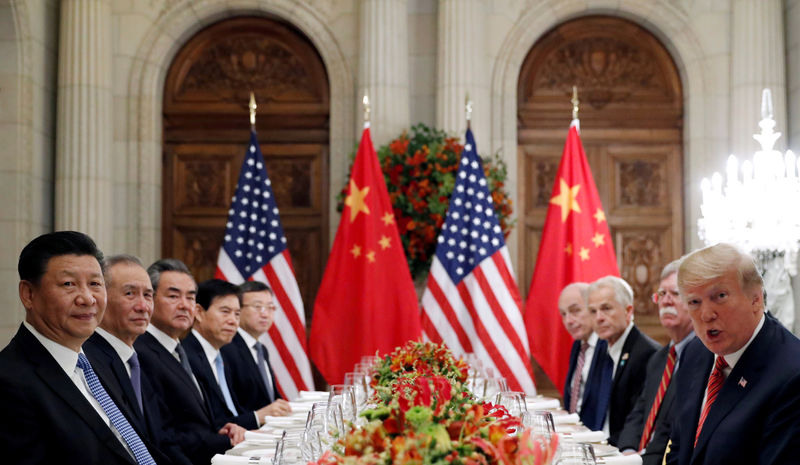Five things to watch in markets in the week ahead
Investing.com -- It remains to be seen in which direction the U.S. tariff policy will ultimately head, but the Trump administration has made it clear that China is the primary target of its trade war.
While tariff exemptions on certain consumer electronics have slightly lowered the average rate on Chinese imports, it still stands at over 100%, compared to just 12.5% at the beginning of the year.
According to Capital Economics, the immediate impact will be higher costs for U.S. consumers, but if these levels persist, they could “dramatically cut trade between the world’s two largest economies.”
The reasons go beyond economic grievances. Although China’s large bilateral trade surplus and its aggressive retaliation to previous U.S. tariffs have contributed to the escalation, Capital Economics says this is part of “a deepening superpower rivalry between Washington and Beijing that has set both countries on a collision course.”
This rivalry is unfolding in a broader context of global economic fracturing. The world is increasingly splitting into two blocs centered around the U.S. and China, and this is reshaping supply chains, trade relationships, and investment flows.
“It will not necessarily result in less cross-border trade – rather, it will affect the direction of trade flows,” the independent economic research firm said in a report, citing Apple’s shift to source more iPhones for the U.S. market from India as a sign of this realignment.
“The result is likely to be greater fragmentation of global supply chains, with some elements configured to serve the US market and others configured to serve China,” it added.
Beijing, for its part, has responded by leveraging its dominance over rare earth minerals, restricting exports to the U.S. as part of its pushback. This control over critical resources, especially in countries aligned with China such as those in Africa and Latin America, could further inflame supply chain tensions and add to global price volatility.
Capital flows are also becoming increasingly politicized. The U.S. has begun to favor investments from allies while restricting Chinese capital.
The so-called ‘America First Investment Memorandum’ “explicitly called for greater investment from U.S. allies alongside restrictions on investment from China,” the report says.
While U.S. politics is often divided, the stance on China has become bipartisan. Capital Economics notes that “lawmakers on both sides of the aisle are united on the need to push back against China.”
And with Beijing viewing itself as a counterbalance to U.S. hegemony, this dynamic is unlikely to change regardless of who holds the presidency.
The path ahead remains uncertain, Capital Economics notes. One risk is that the U.S. could alienate allies, which would undercut one of its key strategic advantages. Another, more serious concern is the possibility of conflict if rivalry intensifies further.
